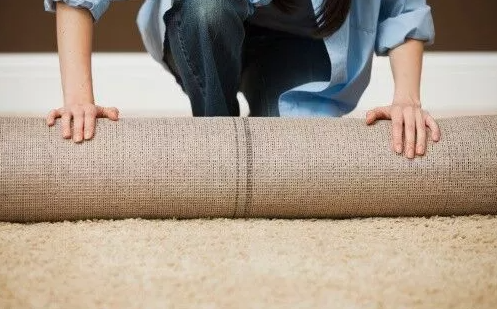Carpets are the most comfortable, appealing, and luxurious floor covering options you can have in your home.
They are soft and warm, making them comfier to walk, stand, and sit on. Choosing the right type and design of carpets in Dubai can make your home look and feel more welcoming, appealing, and even luxurious.
However, like other flooring options, carpets also have a limited lifespan. They often last between five and 25 years.
Moreover, carpets can get worn, torn, and old quickly when subjected to frequent heavy foot traffic.
But having your carpets for several years and seeing noticeable tears and wear are not the only signs telling you that it’s time to replace them.
There are other indicators you have to watch out for to know if you need to replace your carpets immediately.
When to Replace Your Carpets
Below are the top signs that indicate it’s time to change your carpets:
- Unappealing, stubborn stains.
Stains caused by spilled red wine, coffee, mustard, and other dark-colored beverages and sauces are hard to remove and can make your carpet unappealing to look at.
Although you can remove these stains with the right products and a bit of hard work, there are instances wherein you can’t get rid of them completely.
If the stains are too stubborn and you can’t remove and hide them under area rugs and furniture pieces, the best option is to get a new carpet.
You’ll be able to save money when you replace your floor covering since you won’t have to buy cleaning products or pay for professionals to remove the stains.
- An unpleasant odor.
Your sense of smell can tell you when you need to replace your floor covering.
When children and pets frequently soil and spill fluids on the carpet and you don’t spot-clean or clean it often, a foul smell will permeate the room and even your entire home.
This odor often becomes more perceptible when your house is cold. You will notice that your carpet emits a nasty, damp smell, particularly if it is old.
If the carpet is still relatively new, having professional cleaners shampoo and deep-clean it can remove the unpleasant smell.
However, if the odor does not go away even if you have your carpet deep cleaned, you need to replace it immediately. After all, no one wants to live in a home with a musty smell.
- Water damage and molds.
Minor spills may not be catastrophic, but a broken pipe, foundation and structural leak, or flood in your home can lead to severe carpet water damage.
Some signs of carpet water damage include discoloration, fading, wrinkling, sogginess, and a musty odor.
When the water damage is severe and not dealt with properly and immediately, your flooring can become covered in molds.
When your carpet starts developing molds, it can trigger and aggravate asthma and allergy symptoms in those who already have these conditions.
Some signs that your floor covering has molds include green, black, or white stains that grow bigger and change shape, and a musty and stale smell that does not disappear even when you clean or disinfect it.
If your carpet is already covered with molds, you need to replace it immediately for health reasons.
- Worn-out carpet padding.
Carpet padding or carpet underlay serves as the foundation for the fibers. It supports this floor covering option, making it more comfortable to walk, sit, and lie on.
Additionally, the padding buffers sounds, keeps a room quieter, and improves insulation.
Without this part, your floor covering will only be a layer of fabric.
However, the padding also absorbs spills, which can’t be removed when you clean the carpet. When this part remains wet and dirty, your carpeting becomes wrinkled and uneven.
It produces a crinkling sound when someone walks over it as well.
Unfortunately, worn-out padding can’t be repaired or replaced. When your floor covering has this issue, it is best to replace it.
- Onset or aggravation of allergies.
Aside from molds, carpets tend to accumulate dust, pollen, pet hair, and other allergens.
Prolonged exposure to these substances can cause members of your household to develop allergies. If they already have this health condition, their symptoms can worsen.
These substances can also cause asthma.
If you or other people in your household are showing these symptoms, your carpets are likely causing or aggravating allergy-induced asthma, contact dermatitis, or allergic rhinitis:
- Frequent sneezing
- Runny and itchy nose
- Congestion
- Itchy and watery eyes
- Coughing and wheezing
- Itchy and irritated throat
- Hives
- Red and itchy skin
If these allergy symptoms do not disappear even after you and your family boost your immune system, vacuum thoroughly, and have the carpet professionally cleaned, it usually means that the allergens and other bacteria are embedded so deeply in the carpeting that these may now be in the padding.
As mentioned, you can’t replace or clean your carpet padding. To avoid developing allergies or aggravating your and your family’s symptoms, change your floor covering as soon as possible.
When you notice these signs in your carpets and the allergy or asthma symptoms in your family, avoid more inconveniences and maintain a healthy, comfortable, and lovely home by investing in new ones.
AUTHOR BIO
James Prathap is the General Manager at NGC Nafees, one of the leading distributors of wallpapers, floorings, and fabrics in the Middle East and South Asia. Formed three decades ago, the business also offers high-quality panoramics, coordinated fabrics, and creative stickers for residential and commercial projects.

















